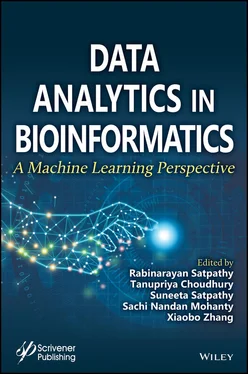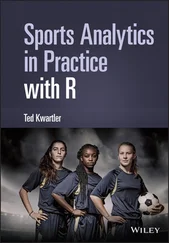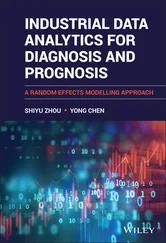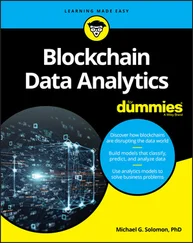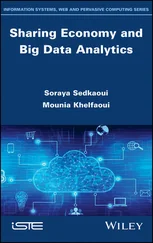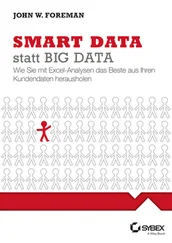6 Chapter 6Figure 6.1 Multiple levels of omics data in biological system, from genome, epig...Figure 6.2 (a) Hypothesis 1: Molecular variations propagates linearly in a hiera...Figure 6.3 Different integration pipelines of multi-level omics data. (a) Horizo...Figure 6.4 Methods for parallel integration. (a) Concatenation-based, (b) transf...
7 Chapter 7Figure 7.1 Knowledge discovery process in genomic data.Figure 7.2 Decision tree classifier on a dataset having two features (X 1and X 2)...Figure 7.3 Ensemble learning model to increase the accuracy of classification mo...Figure 7.4 Bootstrap aggregation (bagging) technique.Figure 7.5 Implementing RF classifier in a dataset having four features (X 1…X 4) ...Figure 7.6 Genes, proteins and molecular machines.
8 Chapter 8Figure 8.1 Ensemble learning.Figure 8.2 Output label.Figure 8.3 Heat map.Figure 8.4 Correlation matrix.Figure 8.5 Confusion matrix.Figure 8.6 Confusion matrix.Figure 8.7 Comparison of different methods.
9 Chapter 9Figure 9.1 Schematic representation of DNA microarray technology [12].Figure 9.2 Model for microarray data analysis [13].Figure 9.3 Social hierarchy of grey wolves.Figure 9.4 Flow chart of GWO.
10 Chapter 10Figure 10.1 Flowchart for K-mean clustering.Figure 10.2 Linear classifier.Figure 10.3 Hyper plane classifier.Figure 10.4 Optimal line.Figure 10.5 Working process of SVM.Figure 10.6 Hybrid algorithm.Figure 10.7 C—means clustering algorithm.Figure 10.8 Model of data prediction.Figure 10.9 The flow-chart signifies different systems, approaches and investiga...
11 Chapter 12Figure 12.1 Total Confirmed Cases across the world on May, 2020. (Source : https...Figure 12.2 Confirmed Covid-19 cases in Tamilnadu—Highly affected cities. (Sourc...Figure 12.3 Proposed model for forecasting covid-19.Figure 12.4 Working of LSTM.Figure 12.5 Working of the gradient boosting algorithm.Figure 12.6 Output of linear regression for linear data.Figure 12.7 Working of polynomial regression with the non-linear data.Figure 12.8 Actual and predicted values of Confirmed cases using polynomial Regr...Figure 12.9 Actual and predicted values of fatalities using polynomial regressio...
12 Chapter 13Figure 13.1 Block diagram.Figure 13.2 Input image.Figure 13.3 Gray image.Figure 13.4 Filtered image.Figure 13.5 SNR comparison.Figure 13.6 Identification of cancer.
13 Chapter 14Figure 14.1 C3-A2 channel of EEG signal for different stages behavior of sleep: ...Figure 14.2 60 s epoch original EEG signal behavior from Healthy Subject.Figure 14.3 Different brain behaviors of healthy subject during different sleep ...Figure 14.4 EEG signal behavior from sleep disorder subject with duration of 60 ...Figure 14.5 Different sleep stage characteristics from subject affected with sle...Figure 14.6 (a) 10–20 Electrode placement system, (b) Notations for placement of...Figure 14.7 Left frontal region recording.Figure 14.8 Left central region recording.Figure 14.9 Right frontal recording.Figure 14.10 Right central recording.Figure 14.11 Left occipital recording.Figure 14.12 Right occipital region recording.Figure 14.13 Right outer canthus region recording.Figure 14.14 Left outer canthus region recording (typical activity of the EOG (L...Figure 14.15 Chin EMG region recording (typical activity of the EMG (EMG-X1)).Figure 14.16 Limb EMG (left leg) region recording (typical activity of the EMG (...Figure 14.17 Limb EMG (Right Leg) Region Recording (Typical activity of the EMG ...Figure 14.18 Sleep stages behavior of the subjects (a) Subject-16, (b) Subject-1...Figure 14.19 Framework of the proposed research work.Figure 14.20 Performance graphs of the proposed SleepEEG test model with the C4-...
14 Chapter 15Figure 15.1 Electrode placement method.Figure 15.2 EEG delta, theta, alpha, beta and gamma [7].Figure 15.3 Steps involved in processing of EEG signal.
15 Chapter 16Figure 16.1 Bioinformatics suit.Figure 16.2 Amount of data stored by EBI over the years [3].Figure 16.3 Depicts prokaryotic & eukaryotic cells.Figure 16.4 Eukaryotic nuclear DNA within the chromosomes.Figure 16.5 Depicts RNA transcription process shows a strand RNA given from a do...Figure 16.6 Depicts transcription and translation describing the process of conv...Figure 16.7 Depicts a protein handshake.Figure 16.8 Depicts Protein–Protein interaction render to hotspot.Figure 16.9 Complex plane of unit circle taken for 20 complex numbers in CPNR.Figure 16.10 Mapping of amino acids using CPNR.Figure 16.11 Mapping of amino acids using EIIP.Figure 16.12 Depicts Flow of EIIP, CPNR mapping with DWT for hotspots identifica...Figure 16.13 CPNR results.Figure 16.14 EIIP results.Figure 16.15 Confusion matrix.Figure 16.16 Precision calcuation details.Figure 16.17 Recall calculation details.Figure 16.18 Overall performance analysis visualization.
16 Chapter 18Figure 18.1 Overview of experimental methodology.Figure 18.2 Correlation heatmap.Figure 18.3 Encoding process.
17 Chapter 19Figure 19.1 Framework of the book chapter.Figure 19.2 Actual vs predicted behavior BSE February, 2001.Figure 19.3 Actual vs predicted behavior BSE February, 2004.Figure 19.4 Actual vs predicted behavior BSE February, 2005.Figure 19.5 Actual vs predicted behavior BSE February, 2008.Figure 19.6 Actual vs predicted behavior BSE February, 2010.Figure 19.7 Actual vs predicted behavior BSE March, 2001.Figure 19.8 Actual vs predicted behavior BSE March, 2002.Figure 19.9 Actual vs predicted behavior BSE March, 2003.Figure 19.10 Actual vs predicted behavior BSE March, 2006.Figure 19.11 Actual vs predicted behavior BSE March, 2008.Figure 19.12 Actual vs predicted behavior BSE March, 2010.Figure 19.13 Actual vs predicted behavior BSE April, 2001.Figure 19.14 Actual vs predicted behavior BSE April, 2003.Figure 19.15 Actual vs predicted behavior BSE April, 2004.Figure 19.16 Actual vs predicted behavior BSE April, 2007.Figure 19.17 Actual vs predicted behavior BSE April, 2008.Figure 19.18 Actual vs predicted behavior BSE May, 2001.Figure 19.19 Actual vs predicted behavior BSE May, 2002.Figure 19.20 Actual vs predicted behavior BSE October, 2002.Figure 19.21 Actual vs predicted behavior BSE October, 2003.
18 Chapter 20Figure 20.1 Framework for prediction using Markov model.Figure 20.2 Example for zero order Markov model of BSE (2001).Figure 20.3 Example for first order Markov model of BSE (2001).Figure 20.4 Behavior of BSE, January 2005 (actual vs predicted).Figure 20.5 Behavior of BSE, February 2005 (actual vs predicted).Figure 20.6 Behavior of BSE, March 2005 (actual vs predicted).Figure 20.7 Behavior of BSE, March 2010 (actual vs predicted).Figure 20.8 First two days prediction accuracy percentage of BSE (November).Figure 20.9 First four days prediction accuracy percentage of BSE (November).Figure 20.10 First six days prediction accuracy percentage of BSE (November).
1 Chapter 1Table 1.1 Regression statistics.Table 1.2 AUC: Logistic regression.Table 1.3 Difference between linear & logistic regression.Table 1.4 AUC: Random forest.Table 1.5 AUC: K-nearest neighbor.Table 1.6 AUC: Decision trees.Table 1.7 AUC: Support vector machines.Table 1.8 AUC: Neural network.Table 1.9 AUC: Comparison of numerical interpretations.
2 Chapter 2Table 2.1 Gene expression data matrix representation.
3 Chapter 3Table 3.1 Shows published articles of ANN used for biological data.
4 Chapter 5Table 5.1 Highlights the important work of literature published in the last two ...Table 5.2 Depicts the features influencing each of the 9 principal components.
5 Chapter 6Table 6.1 Published studies of multi-level omics data integration using unsuperv...Table 6.2 Published studies of multi-level omics data integration using supervis...
6 Chapter 7Table 7.1 The classification accuracy, recall, precision and F-score of ensemble...Table 7.2 The classification accuracy, recall, precision and F-score of ensemble...Table 7.3 The classification accuracy, recall, precision and F-score of ensemble...
Читать дальше
